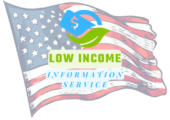Low Income Subsidy
Welcome to our blog post on low income subsidy! In this article, we will explore the various aspects of low income subsidy, including understanding what it is, who is eligible for it, the benefits it provides, and how to apply for it. As financial assistance programs become increasingly important in supporting individuals and families with limited income, we aim to provide a comprehensive guide that will help you navigate through the process of obtaining the low income subsidy. Get ready to discover the potential benefits that await you through this valuable program.
Understanding Low Income Subsidy
The Low Income Subsidy (LIS) program, also known as Extra Help, is a federal assistance program designed to provide financial assistance to individuals with limited income and resources to help cover the costs of their Medicare prescription drug plans. This subsidy aims to ensure that beneficiaries have access to affordable prescription medications, promoting better health outcomes and overall well-being.
To qualify for the Low Income Subsidy program, individuals must meet certain eligibility criteria. These criteria include having income below a specific threshold and limited assets. The income threshold varies depending on the size of the household, with higher limits for larger households. Assets that are considered include investments, bank accounts, and real estate, excluding primary residences and certain other resources.
There are numerous benefits associated with the Low Income Subsidy program. Firstly, qualified individuals receive assistance in covering their Medicare Part D premiums, deductibles, and copayments, resulting in significant cost savings. Moreover, beneficiaries of the LIS program are exempt from the coverage gap, commonly known as the “donut hole,” where they would typically have to pay a larger share of their prescription costs. This ensures that even individuals with limited income can access necessary medications without facing financial hardship.
| Income Level | Subsidy Percentage |
|---|---|
| Up to 100% of the Federal Poverty Level | 100% |
| 100% – 135% of the Federal Poverty Level | 75% |
| 135% – 140% of the Federal Poverty Level | 50% |
Applying for the Low Income Subsidy program is a straightforward process. Individuals can complete an application online through the Social Security Administration’s website, or they can contact their local Social Security office for assistance. The application requires information about income, assets, and other relevant factors. Once approved, beneficiaries will receive notification regarding the level of subsidy they qualify for and will be able to start enjoying the benefits of the program.
Eligibility Criteria For Low Income Subsidy
Understanding the Eligibility Criteria for Low Income Subsidy is crucial for individuals who may require financial assistance to cover their healthcare costs. The Low Income Subsidy, also known as Extra Help, is a program designed to provide assistance with prescription drug costs for Medicare beneficiaries with limited income and resources. To qualify for this subsidy, individuals must meet specific eligibility criteria set by the Social Security Administration (SSA).
One of the primary eligibility criteria for the Low Income Subsidy is income. To qualify, an individual’s yearly income must be below a certain threshold. The exact income limit may vary each year and is dependent on factors such as household size and location. The SSA takes into consideration various sources of income, including wages, pension, Social Security benefits, and other types of financial assistance. It is important to note that not all sources of income are counted towards determining eligibility, so it is crucial to understand which sources are considered.
Additionally, the Low Income Subsidy considers an individual’s resources or assets when determining eligibility. Resources include bank accounts, stocks, bonds, and real estate properties (excluding the primary residence). To qualify for the subsidy, the total value of an individual’s resources must be below a certain threshold set by the SSA. The value of a person’s primary residence, personal belongings, and vehicles are not considered as resources for the eligibility assessment.
Resources: The total value of resources must be below a specified limit.
Primary residence: The value of the primary residence is not considered as a resource.
| Income | Resources | Primary Residence |
|---|---|---|
| Below specified threshold | Below specified limit | Not considered as a resource |
Benefits Of Low Income Subsidy
The Benefits of Low Income Subsidy
Low Income Subsidy (LIS) is a valuable program that provides financial assistance to qualified individuals with limited income and resources. The LIS program, also known as Extra Help, is specifically designed to help eligible beneficiaries with their prescription drug costs under the Medicare Part D program. By alleviating the financial burden of medication expenses, the LIS program ensures that individuals with low income can access necessary medications without compromising their financial stability.
Access to Affordable Medications
One of the key benefits of the Low Income Subsidy program is that it allows beneficiaries to access prescription medications at significantly reduced costs. With the rising prices of medications, many individuals struggle to afford necessary treatments. However, through the LIS program, eligible beneficiaries only need to pay a small copayment or even no copayment at all for covered prescription drugs. This substantial reduction in medication expenses ensures that individuals can receive the medications they need to manage their health conditions effectively.
Prescription Coverage Throughout the Year
Another advantage of the Low Income Subsidy program is that it provides continuous prescription drug coverage throughout the year. Typically, Medicare Part D has a coverage gap known as the “donut hole.” Once an individual reaches their initial coverage limit, they are responsible for a larger share of their medication costs. However, beneficiaries who qualify for the LIS program are exempt from this coverage gap. They continue to receive their prescription drugs at a reduced cost even if they surpass the initial coverage limit, ensuring uninterrupted access to necessary medications.
Protection Against Late Enrollment Penalties
Enrolling in a Medicare Part D plan is crucial, as it provides coverage for prescription medications. However, individuals who delay their enrollment may face late enrollment penalties. Fortunately, those who are eligible for the Low Income Subsidy program are protected from these penalties. This means that even if a person qualifies for the LIS program later on, they can enroll in a Part D plan without facing any additional costs. This benefit makes it easier for individuals with limited income to access prescription drug coverage without being penalized for late enrollment.
Utilizing the Benefits
To take advantage of the benefits provided by the Low Income Subsidy program, it is important to determine eligibility. Eligible individuals must meet specific income and resource requirements to qualify for the program. It is recommended to reach out to the Social Security Administration or visit their official website to access detailed information on the criteria and application process. Applying for the LIS program opens doors to affordable medications, continuous coverage, and protection against penalties, ultimately improving the overall well-being of eligible beneficiaries.
Applying For Low Income Subsidy
Applying for low income subsidy can provide much-needed financial assistance to individuals and families who are struggling to make ends meet. The Low Income Subsidy, also known as Extra Help, is a government program designed to help eligible individuals pay for their prescription drugs through Medicare Part D. It can significantly reduce the out-of-pocket costs associated with prescription medications, making it easier for those with limited incomes to afford necessary treatments.
To be eligible for the Low Income Subsidy, certain criteria must be met. Firstly, individuals must be enrolled in Medicare Part D, which is the prescription drug coverage offered by Medicare. Additionally, they must have limited resources, which include assets such as bank accounts, investments, and real estate, valued at less than a certain threshold set by the program. Furthermore, individuals must have an income below a specific limit, which is adjusted annually. Meeting these eligibility criteria is crucial in applying for and receiving the Low Income Subsidy.
There are several benefits associated with the Low Income Subsidy. Firstly, it provides financial relief by reducing or eliminating monthly premiums, deductibles, and co-payments for prescription drugs. This can result in significant savings for individuals, particularly those with chronic conditions who require regular medication. Additionally, the program ensures that individuals have access to a wide range of prescription drugs, as it covers both generic and brand-name medications. This ensures that individuals can afford and receive the necessary treatments without compromising their health and wellbeing.
| Applying for Low Income Subsidy | Eligibility Criteria for Low Income Subsidy | Benefits of Low Income Subsidy |
|---|---|---|
|
|
|
|
|
|
|
|
|
|
|
|
Applying for the Low Income Subsidy involves a straightforward process. Firstly, individuals need to complete and submit an application form, either online or by mail. It is important to provide accurate and up-to-date information to ensure a smooth review of the application. Additionally, necessary income and resource documentation should be submitted to verify eligibility. This may include recent bank statements, tax returns, and proof of income. Once the application is submitted, individuals will need to wait for the approval process, which can take several weeks. It is crucial to be patient and follow up if necessary to ensure a successful application.
The Low Income Subsidy is an invaluable resource for individuals and families facing financial difficulties. It can alleviate the burden of high prescription drug costs and ensure access to necessary medications. By understanding the eligibility criteria and going through the application process, individuals can take advantage of this beneficial program and improve their overall quality of life.
Frequently Asked Questions
1. What is the low income subsidy?
The low income subsidy, also known as Extra Help, is a program that helps eligible individuals and families with limited income pay for their Medicare prescription drug costs.
2. Who is eligible for the low income subsidy?
To be eligible for the low income subsidy, you must have Medicare Part A and/or Part B, live in one of the 50 states or the District of Columbia, and meet the income and asset limits set by the Social Security Administration.
3. What are the income and asset limits for the low income subsidy?
The income and asset limits for the low income subsidy may vary each year. For 2021, the income limit is $19,320 for individuals and $26,130 for married couples living together. The asset limit is $14,790 for individuals and $29,520 for married couples living together.
4. What are the benefits of the low income subsidy?
The low income subsidy provides various benefits, including reduced or no monthly premium for Medicare prescription drug plans, no deductible, lower copayments for prescription drugs, and coverage during the coverage gap (“donut hole”).
5. How can I apply for the low income subsidy?
To apply for the low income subsidy, you can complete an application online at the Social Security Administration’s website, call their toll-free number, or visit your local Social Security office. You may also apply through your state’s Medicaid office or the State Health Insurance Assistance Program (SHIP).
6. What documents do I need to apply for the low income subsidy?
When applying for the low income subsidy, you will need to provide documents such as your Social Security number, proof of income (such as pay stubs or tax returns), and information about your assets (such as bank statements or property records).
7. Can I apply for the low income subsidy at any time of the year?
Yes, you can apply for the low income subsidy at any time of the year. However, it is recommended to apply as soon as possible to start receiving the benefits and avoid any gaps in your prescription drug coverage.



